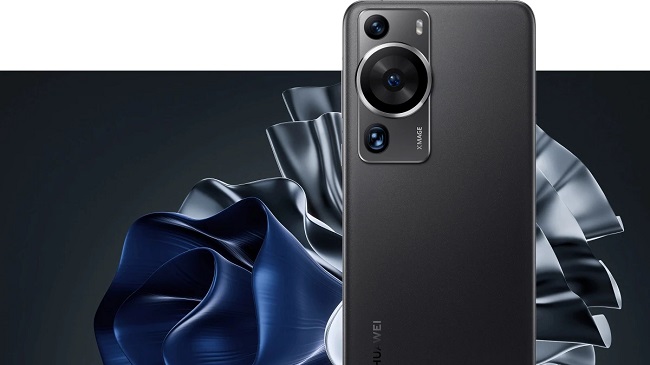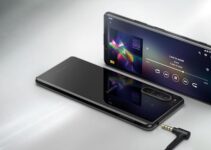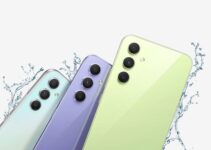Huawei is, without a doubt, one of the most interesting and successful smartphone manufacturers in the world. Huawei’s new P60 series smartphones, which had their formal debut in China on March 23, are therefore always noteworthy.
All You Need To Know Huawei P60 Pro
The new flagship series includes of three different phones: the base-level Huawei P60, the mid-range Huawei P60 Pro, and the top-end Huawei P60 Art. We haven’t seen or heard anything about a cheaper Huawei P60E or P60 Lite, but we can’t rule out the possibility that it exists.

These flagships are expected to go on sale in China on March 30, and given that the Huawei P50 Pro, its predecessor, received four stars in our review, we have high hopes for them.
Everything we know so far about the Huawei P60 series, including the line’s anticipated international release date, pricing, and specifications, is included below.
Release Date and Price of the Huawei P60
On March 23, Huawei introduced the P60 series to the Chinese market. The P60 and P60 Pro went on sale in the region on March 30, while the P60 Art followed on April 7.
Pricing breaks down as follows: the base Huawei P60 is priced at CNY4,488 (about $660 / £535 / AU$980), the base Huawei P60 Pro is priced at CNY6,988 (roughly $1,025 / £830 / AU$1,525), and the base Huawei P60 Art is priced at CNY8,988 (roughly $1,315 / £1,070 / AU$1,960).
Huawei P60
- The price for 128GB is CNY4,488 (about $660, £535, or AU$980).
- The price for 256GB is CNY4,988 ($730; £595; $1,090).
- CNY5,988 ($880; £715; £1,305) is the price of 512 gigabytes.
Huawei P60 Pro
- The price for 256GB is CNY6,988 ($1,025; £830; AU1,525)
- The price for 512GB is CNY7,988 ($1,170; £950; AU$1,745)
Huawei P60 Art
- The price of 512 GB is CNY8,988 ($1,315; £070; $1,960).
- 1 terabyte (TB) is now valued at CNY10,988 ($1,610; £1,310; $2,400).
When the P60 series finally launches in other countries, these immediately converted prices will, of course, be significantly lower than actual retail value elsewhere. In response to TechRadar’s inquiry, Huawei stated, “overseas versions will be introduced on 9th May in Munich, Germany,” presumably referring to all three P60 devices plus the company’s new Mate X3 foldable, which was also unveiled at the event.
The Huawei P50 series first appeared in China in August 2021, however it wasn’t until January 2022 that it was introduced elsewhere (with some areas waiting even longer, until March 2022). The global release of the P60, on the other hand, seems like it will happen more quickly.
At this time, it should go without saying that these phones will not arrive in the United States, and there is also a good probability that they will not arrive in Australia. It is considerably more probable, though, at least for some models in the P60 series, to be made available in the UK.
To put that in perspective, the regular Huawei P50 was never released in the UK but debuted in China for the same 4,488 beginning price as the P60 does now, while the Huawei P50 Pro was priced at £1,099.99 (about $1,345 / AU$1,930) when it did arrive in the UK. Taking into account all of this, the P60 series’ regional pricing may be similar to that of its predecessors that were available internationally.
Design And Display:
Ahead of the P60 series’ unveiling, we saw some leaks and interpretive renders(opens in new tab), and they appear to have been spot on. All three phones have a 6.67-inch, 1220 x 2700 LTPO OLED display, an in-screen optical fingerprint reader, and an adaptive refresh rate that scales from 1Hz to 120Hz (with a 300Hz touch response rate and 1440Hz PWM dimming for reduced eye fatigue).
An ultrawide and periscopic telephoto sensor are placed atop the P60’s offset camera bump above and below the primary sensor, making the primary 48MP sensor the most eye-catching part of the design on all models. It’s a novel sensor layout, and it should help consumers spot the P60 series from a distance.
The rest of the hardware includes a four-sided curved-edge front that is covered in the same toughened KunLun glass that Huawei debuted on the Mate 50 Pro last year, which earned the device an IP68 rating (at least on the P60 Pro and Art). Meanwhile, a glass back and metal frame that has been polished to match the colour.
The P60 and P60 Pro are available in four different colours: Rococo Pearl, violet, black, and green. The white finish is particularly striking, looking like the white nacre on the inside of an oyster shell. The P60 Art has its own unique coating, available in Azure Blue or Seashore Gold, and a camera bump that has a more natural appearance.
Camera and Battery Quality:
The P50 series’ Dual Matrix camera architecture has been scrapped in favour of a more covert triple rear sensor arrangement. All three variants of the P60 include the same primary 48MP RYYB-arrangement sensor with optical image stabilisation.
This sensor configuration is a Huawei favourite and promises improved low-light performance (optical image stabilization). The hardware ten-speed variable aperture allows for settings between f/4.0 and f/1.4, making it comparable to the Mate 50 Pro in this regard.
The P60’s XMAGE camera system consists of a 13MP f/2.2 ultrawide, a 12MP f/3.4 5x optical zoom periscope telephoto lens, and a 12MP f/2.2 fisheye lens. The maximum magnification achievable with the fisheye lens is 50x.
The P60 Pro and P60 Art, meanwhile, upgrade to a 48MP optically-stabilized periscope telephoto camera with a maximum 100x zoom range and an f/2.1 aperture, allowing for far better telephoto zoomed images in low light than virtually any other phone on the market.
Images with lost detail, such as the facets of a light-backed crystal, the texture of a plant stem, or the black lines naturally set into materials like leather or metal, can be restored with the help of a new “texture engine” in the company’s XD Fusion Pro processing system.
All P60 models share a 13MP f/2.4 punch-hole front-facing camera and can shoot video at up to 4K resolution with up to 960fps Full HD slow motion (using AI interpolation). The P60 and P60 Pro have lithium-polymer batteries with a capacity of 4,815 mAh, while the P60 Art has a silicon-oxide battery with a capacity of 5,100 mAh (a technology pioneered by former partner Honor with the Chinese release of the Honor Magic 5 Pro, which boasts a 12.8% increase in energy density in comparison to lithium-based alternatives).
Even if all three versions used batteries of the same capacity, the P60 Art’s cell should live longer due to the superior design and construction. All three P60s support fast wireless charging up to 50W, but the P60 Pro and P60 Art stand out with their 88W cable charging rates (Huawei says the P60 Pro can reach 50% charge after just ten minutes), while the standard P60 still provides undeniably-rapid 66W wired fast charging.
Specs and Features:
The Huawei P60 series is great since there isn’t a significant price gap between the three devices in the lineup (they all share the same size, display, and chipset, for example), so even if you go with the most affordable option, you’ll still be getting some of Huawei’s best work to date.
Similar to the Mate 50 Pro, these three phones are powered by a 4G-only iteration of Qualcomm’s Snapdragon 8 Plus Gen 1 processor beginning in 2022 (there is currently no evidence of a Huawei phone powered by the Snapdragon 8 Plus Gen 2 chipset).
| Huawei P60 Pro
|
Huawei P60 Pro
|
Huawei P60 Art | |||
| Dimensions: | 161 x 74.5 x 8.3mm | 161 x 74.5 x 8.3mm | 161 x 74.5 x 8.3mm | ||
| Weight: | 197 grams | 200 grams | 206 grams | ||
| Main display: | 6.67-inch (1220 x 2700) 120Hz LTPO OLED | 6.67-inch (1220 x 2700) 120Hz LTPO OLED, protected by KunLun Glass | 6.67-inch (1220 x 2700) 120Hz LTPO OLED, protected by KunLun Glass | ||
| Chipset:
|
Snapdragon 8 Plus Gen 1 4G | Snapdragon 8 Plus Gen 1 4G | Snapdragon 8 Plus Gen 1 4G | ||
| RAM: | 8GB
|
8GB / 12GB | 12GB | ||
| Storage:
|
128GB / 256GB / 512GB. Expandable via NM up to 256GB | 256GB / 512GB. Expandable via NM up to 256GB |
|
||
| OS: | HarmonyOS 3.1 (China), EMUI 13.1 (Global) | HarmonyOS 3.1 (China), EMUI 13.1 (Global) |
|
||
| Primary camera: | 48MP, f/1.4 to f/4.0 w/ OIS | 48MP, f/1.4 to f/4.0 w/ OIS |
|
||
| Ultrawide camera: | 13MP, f/2.2 | 13MP, f/2.2 | 13MP, f/2.2 | ||
| Telephoto camera: | 12MP, f/3.4 5x optical periscope zoom w/ OIS | 48MP, f/2.1 3.5x optical periscope zoom w/ OIS |
|
||
| Front camera: | 13MP, f/2.4 punch-hole | 13MP, f/2.4 punch-hole |
|
||
| Battery: | 4,815mAh (lithium-polymer) | 4,815mAh (lithium-polymer) |
|
||
| Charging: | 66W wired, 50W wireless | 88W wired, 50W wireless |
|
||
| Colors: | Rococo Pearl, violet, black, green | Rococo Pearl, violet, black, green | Azure Blue, Seashore Gold |
In China, customers will interact with HongMeng OS 3.1, however the international variant of the P60 series is listed as using EMUI 13.1 on Huawei’s global website.
We noted in September that Huawei had beaten Apple to the punch in bringing satellite connectivity to its Mate 50 series, and that technology is still present on the P60 line at least in China, where it supports what is now two-way satellite messaging via the Chinese Beidou satellite network. But, it’s unlikely that this function will be made available in other countries.
It appears like we’ll have to wait until April 7 to find out about the remainder of what the P60 series has to offer, such as regional pricing and availability and variances in the user experience. Despite the delay, we can say with confidence that all three of these devices will be included in our ranking of the best Huawei phones currently available.


